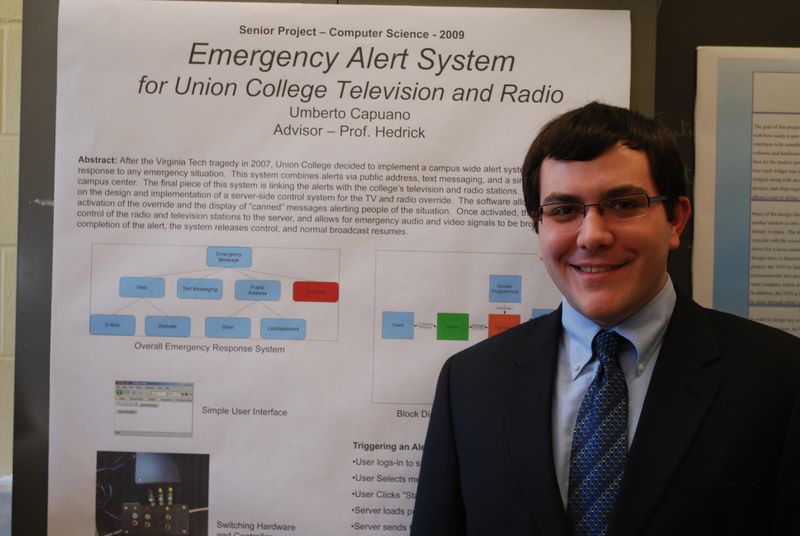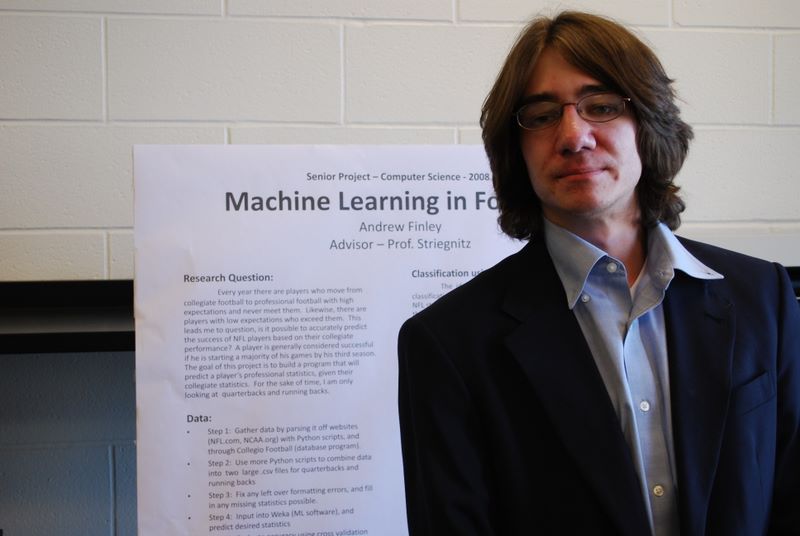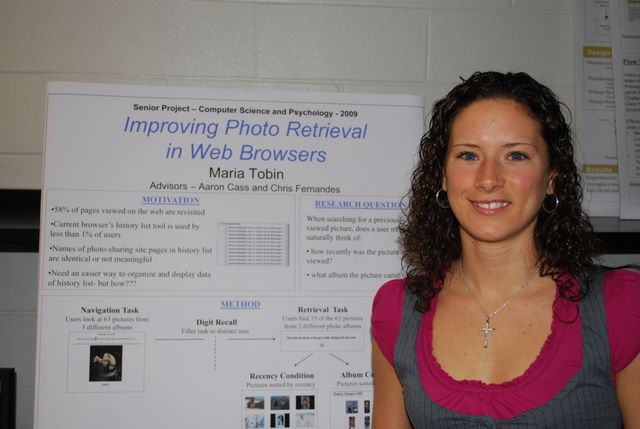| Click on a student picture for a larger view. |

Daven AminAdvisor: Prof. StriegnitzUbiquitous Pleasure: A Study of Location-Aware Gaming
In this project, we argue that computers are moving towards more ubiquitous integration with more traditional human activities, such as games.
As a result, we argue that there will be an emergence of "location-aware" computer games, which merge the virtual reality of computer games with the physical location of the players. We ask the question of whether such games can be considered more pleasurable to players, and what aspects if any make this possible. We then run several user studies to answer this question, comparing a "location-aware" game to a similar computer game and physical-based game. The results gathered from these studies suggest that
"location-aware" games can be more pleasurable than traditional games, and that the key aspects which make these games pleasurable are that of player-player interaction and the actual user interface utilized by the game. |

Umberto E. CapuanoAdvisor: Prof. HedrickEmergency Alert System for Union College Television and Radio
The 2007 tragedy that occurred at Virginia Tech, in which 32 people were killed, has motivated college campuses across the country to reevaluate and improve their communication plans and systems. Instant and widespread communication of instructions is key to preventing tragedy in emergency situations. To this end, Union College has implemented a campus wide alert system, that provides emergency instructions via the campus public address system, text messaging, e-mail, the school's website, and a siren mounted on the campus center. The final piece to complete this system is the inclusion of the college's television and radio stations. This part of the system includes hardware and software that will override the normal programming with an audio message transmitted over the radio station and audio and video messages over the TV station. The TV radio subsystem consists of a browser based program that Campus safety can use to select the emergency messages to be broadcast and initiate an emergency alert, a server to control the switching hardware, and the switching hardware. I will be presenting my design and implementation of the hardware and software for the TV radio subsystem. |

Andrew L. FinleyAdvisor: Prof. StriegnitzMachine Learning in Football
The NFL has one of the largest fan bases and highest revenues in the United States. Despite this, there has consistently been a problem with assessing the talent of upcoming collegiate players. Every year we see players who are drafted with high expectations perform poorly when they reach the professional level. Likewise, there are often players who get drafted very low and have great success. This project attempts to predict a player’s NFL statistics based solely on their collegiate data. My program works by using a decision tree classification algorithm. This takes a set of players with both collegiate and NFL experience, and finds relationships between these player's collegiate and NFL statistics. Based on these relationships, a tree is constructed for each NFL statistic with collegiate statistics as branches, and the desired NFL statistic as leaves. From these trees, a set of rules is constructed that takes a player's collegiate statistics and outputs his predicted NFL statistics. Due to time constraints, my testing is limited to only quarterbacks and running backs. |

Russell GoldenbergAdvisor: Prof. Orellana and Prof. AlmsteadCode Art
Code Art was developed as a way to fuse my two areas of study, Computer Science and Visual Arts. The ultimate goal of this project was to create an exhibition of multiple pieces of artwork showcasing generative and computational art. The final display involved printed images, live animations, and interactive pieces. |

Owen HeneghanAdvisor: Prof. CassWii Punch: Tracking and Gesture Recognition for 3D Game Environments
Trying to understand the nuances behind character control in three dimensional video game environments is a complex task. For this thesis, we will be testing this in order to determine the best approach for manipulating characters in three dimensions, in according to user preferences and playability. The overall goal is to determine the preferred input method for users straight tracking or gesture recognition when it comes to a user's movements. |

Maria TobinAdvisor: Aaron CassImproving Photo Retrieval in a User's Browser History
When returning to a revisited page while navigating the web, users have the choice to use the history list tool, which is a list of all of the pages a user has visited in the past month or so, but instead choose to use the back button more often than not. This may be because the organization of current browser's history lists does not match a user's mental model. That is, what the user sees in the history list is not what they see in their mind when searching for a previously viewed page. Therefore, to help improve future history list designs, we want to find out what mental organization users have of their browsing histories. For example, when a user wants to re-view a photo they saw on a photo-sharing website, do they think first in terms of what album that photo was originally from or do they think first in terms of how recently they saw the photo? We present the results of a user study addressing this particular question. |
CS: 2008 2007 2006 2005 2004 2003
This report generated by script ./write.project.sections - May 01, 2009
Address questions or comments to spallhol@union.edu